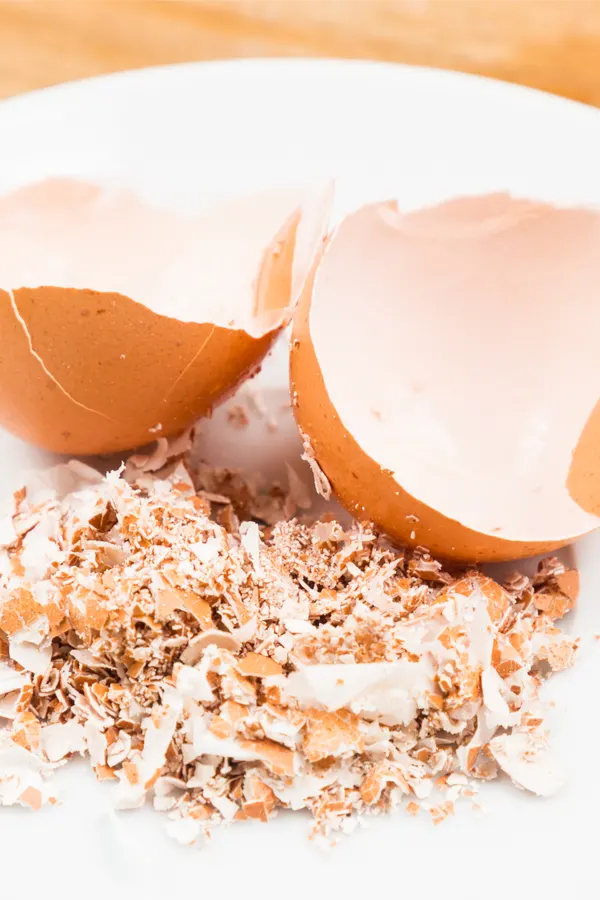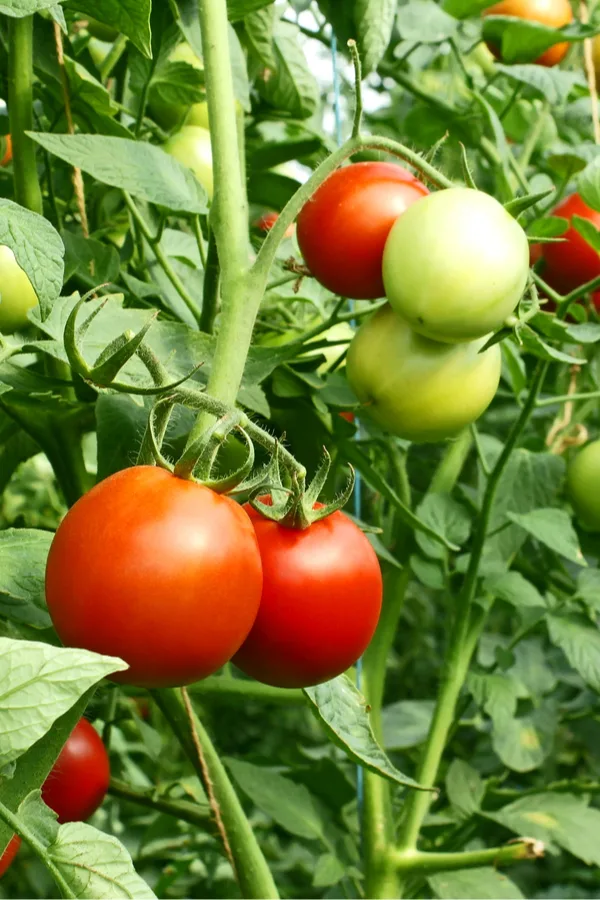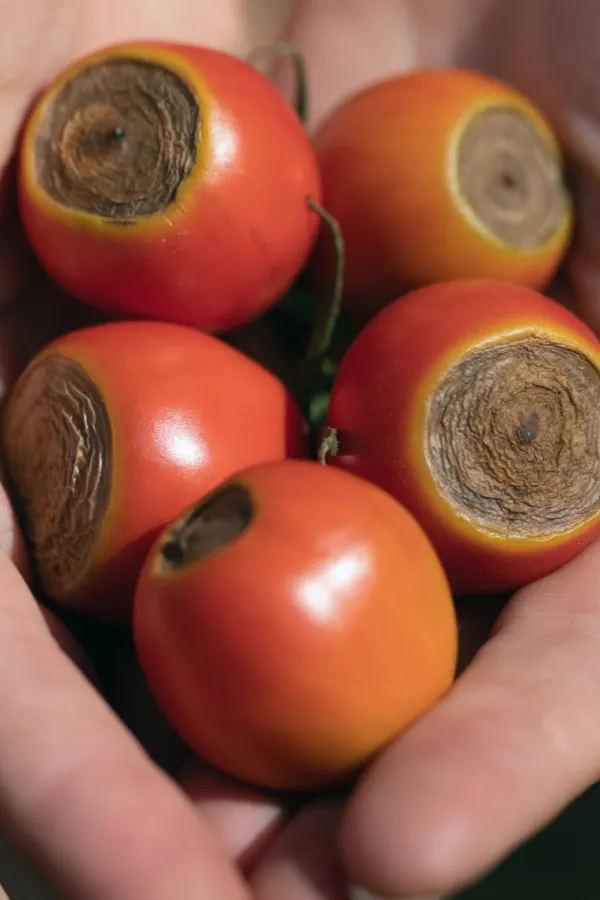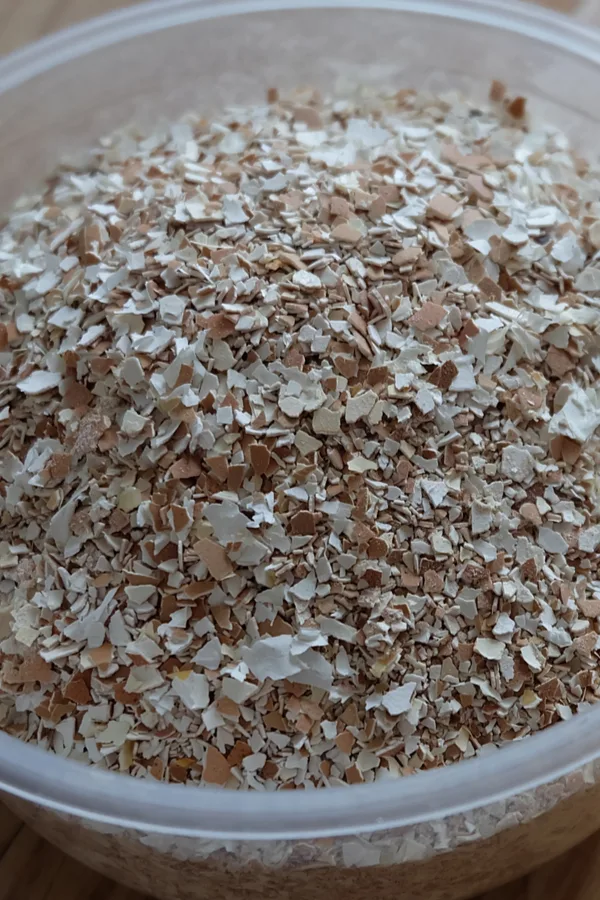When it comes to one of the easiest, simplest and most cost effective ways to help power your tomato plants and keep them healthy, it’s hard to beat the benefits of planting egg shells with your plants!
We have been planting crushed egg shells along with our tomato plants for a little over 10 years now. One thing is for sure, it is truly amazing just how effective it has been in helping to keep our tomato crops healthy, strong and productive.
In fact, so much so, we now mix them into the planting holes of all of our vegetable plants!

Not only is it easy to do, it can be done entirely for free. Egg shells are certainly not hard to come by. They are one of the most common food by-products around – whether it be from a morning breakfast, or a multitude of baking efforts in the kitchen.
But do those egg shells ever have power. Egg shells contain elements and nutrients that are quite beneficial to plants. Especially when it comes to tomato plants!
A typical egg shell contains calcium carbonate, magnesium carbonate, and other trace minerals and organic substances. And for tomato plants (and other vegetable plants too), that calcium can play a huge role in their health.
Tomato Production & Calcium – Why To Plant Egg Shells With Tomatoes
Like all vegetable plants, tomatoes need the typical nutrients such as nitrogen, potassium and phosphorous to grow healthy and strong. But, they also have a critical need for calcium and magnesium – and each play a different role in the long term health of your tomato plants.
Magnesium
If your tomato plants have ever had their leaves curling under with their color turning to a yellowish shade, it is most likely due to a magnesium deficiency.

Unfortunately, many times, gardeners mistake the yellowing for a lack of water. Of course, that leads to over-watering, which can make the magnesium deficiency even more of an issue as the roots become water-logged, and the plant can’t take up any nutrients at all.
This can be especially true in soils that are slightly acidic or very loose and sandy. When this deficiency occurs, it can cause a tremendous amount of stress on the plant. The result? Lackluster growth, fewer blooms, and very low yields.
Calcium
Calcium plays an even more important role in the health and well being of tomato plants. As a tomato plant grows, it uses calcium from the soil for building strong cell walls. And those sturdy cell walls help the plant to create thick, sturdy stems and branches.
But calcium also is critical for producing healthy fruit. Extremely critical! And when there is not enough calcium in the soil for a tomato plant to absorb, it unfortunately leads to blossom rot.
The Deadly Scourge of Blossom End Rot – Why To Plant Egg Shells With Tomatoes
Blossom end rot is one of the most damaging, devastating and depressing things that can happen to a gardener’s tomato crop. As the tomato fruit starts to set on the vine – small, dark, rough spots begin to appear on the ends of the tomatoes.

Before the tomato has a chance to ripen, the dark spot evolves to turn the entire tomato into a rotten mess. It can devastate and ruin an entire crop that otherwise was healthy and strong.
Many mistakenly think of blossom end rot as a disease. It is actually not a disease at all, but instead, a condition caused from a lack of available calcium to the plant.
It is most prevalent and well-known for destroying the fruit of tomato crops. However, blossom rot can also affect peppers, cucumbers, pumpkins and zucchini just as easily.
That is exactly why planting crushed egg shells with your tomato plants (and the other vegetables listed above) is so important. It just happens to be the perfect solution to help eliminate the entire problem!
How To Plant Egg Shells With Tomatoes
When crushed egg shells are mixed into the soil at planting time, they begin to break down and leach calcium, magnesium and other trace nutrients back into the soil. As this occurs, it allows the roots of tomato plants to soak it up.

The key to real success is crushing the egg shells up as finely as you can. The larger the shell pieces are, the longer it will take them to break down. But when crushed into tiny pieces or even a fine powder, the nutrients can be absorbed at a much faster pace.
For this very reason, many gardeners employ the use of a coffee grinder to grind up their egg shells. It makes fast work of the chore. It grinds the shells into an ultra-fine substance perfect for using in the planting holes. Product Link : Hand Held Electric Coffee Grinder
The Process Of Using Egg Shells – How To Keep Tomato Plants Healthy
At planting time, use the fines from two to three egg shells in every planting hole. As a general rule of thumb, mixing in two to three tablespoons with the soil in each hole will do the trick.
As you plant the transplant in the hole, place the crushed shells in the bottom of the hole around the base of the roots. This will allow the nutrients the closest path to absorption.
Believe it or not, the wonders of egg shells and tomato plants doesn’t end with the shells in the planting hole. You can also place egg shells at the surface of your tomato plants as well. These shell pieces can be left a bit larger, and for good reason.

By placing egg shell pieces around the main stem of your plant (a few inches out from the stem), it will protect your plant from slugs crawling up the base.
Even better, those shells eventually break down as well to put even more calcium in the soil. It really is the one-two punch to success for protecting your tomato plants!
Crushed Egg Shells – Don’t Forget Your Compost Pile
It goes without saying that any left over shells from planting day make a perfect addition to your compost pile. Egg shells add the same unique blend of nutrients to finished compost as they do to the soil around your tomato plants.
It’s just one more reason to always save those egg shells and put them to good use. Egg shells really are the perfect, all-natural and entirely free way to power your tomato plants to great health, and super yields.
Here is to growing your best tomato crop ever this year, and keeping your tomato plants healthy. Happy Gardening! Jim and Mary.
Jim and Mary Competti have been writing gardening, DIY and recipe articles and books for over 15 years from their 46 acre Ohio farm. The two are frequent speakers on all things gardening and love to travel in their spare time.
As always, feel free to email us at thefarm@owgarden.com with comments, questions, or to simply say hello! You can sign up for our free email list in the subscribe now box in the middle of this article. Follow us on Facebook here : OWG Facebook. This article may contain affiliate links.
